Solomon Islands
Ropiko Resort, a Real Family Affair
Tony and Elaine Wilson have literally gone off the beaten track in the Solomon Islands to seek out small Solomon Islander owned – or at least part owned – resorts that offer a true insight into the life of these Melanesian people.
May 31, 2019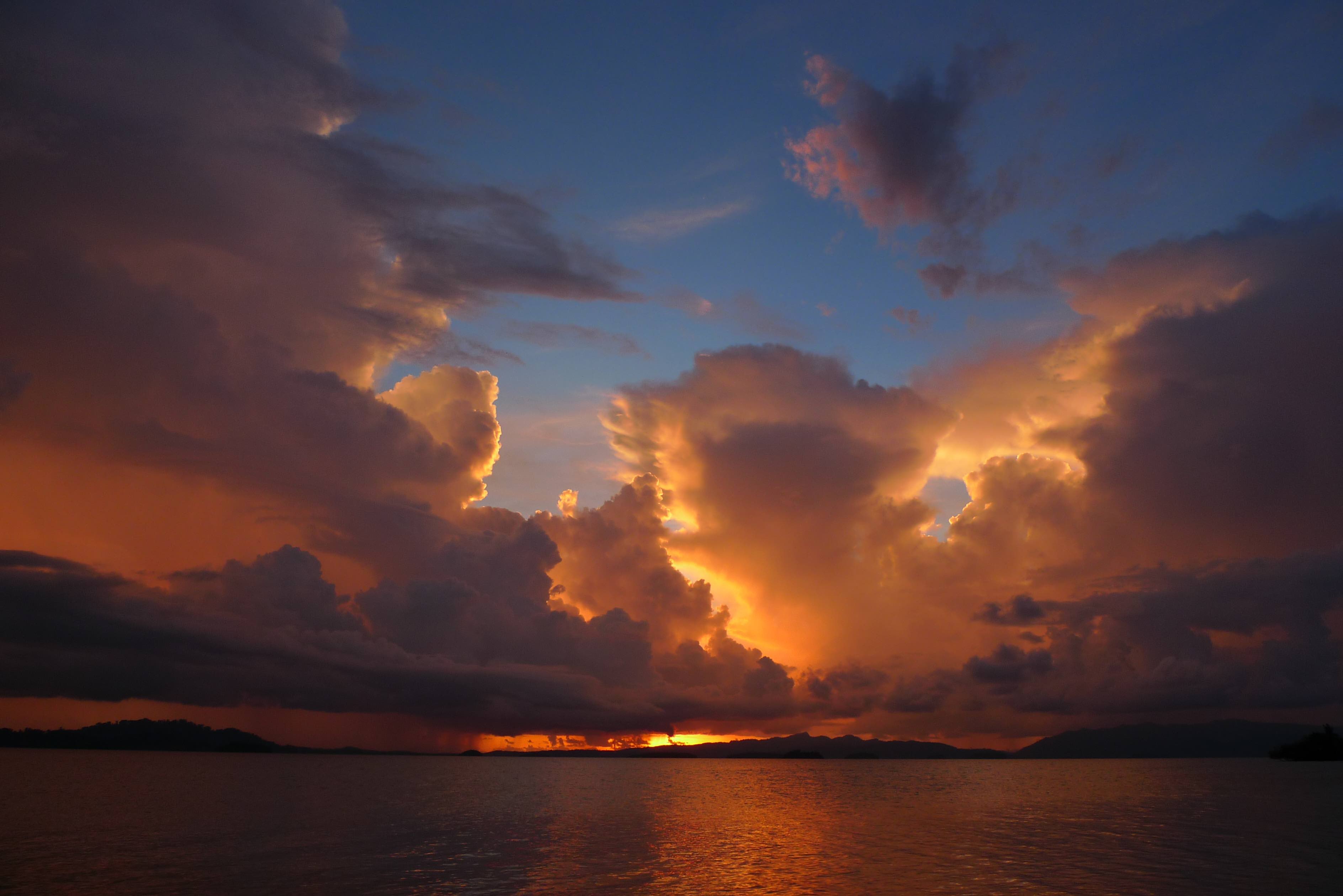
Rebecca Murphy
May 31, 2019When we landed on the beach at Ropiko Resort, there were several generations of the Piko family nearby to greet us.
Three little girls were frolicking in the crystal clear water and one of them excitedly ran out of the shallows to give us a beautiful, spotted cowrie shell she had just found.
It typified this resort deep into the Solomons’ myriad of islands as it really was a family affair. And they are the friendliest people you could imagine.
The setting for Ropiko is right on the beach and as you walk through to your accommodation, you find yourself in a beautiful garden, festooned with orchids, that has been carefully cultivated over several years.
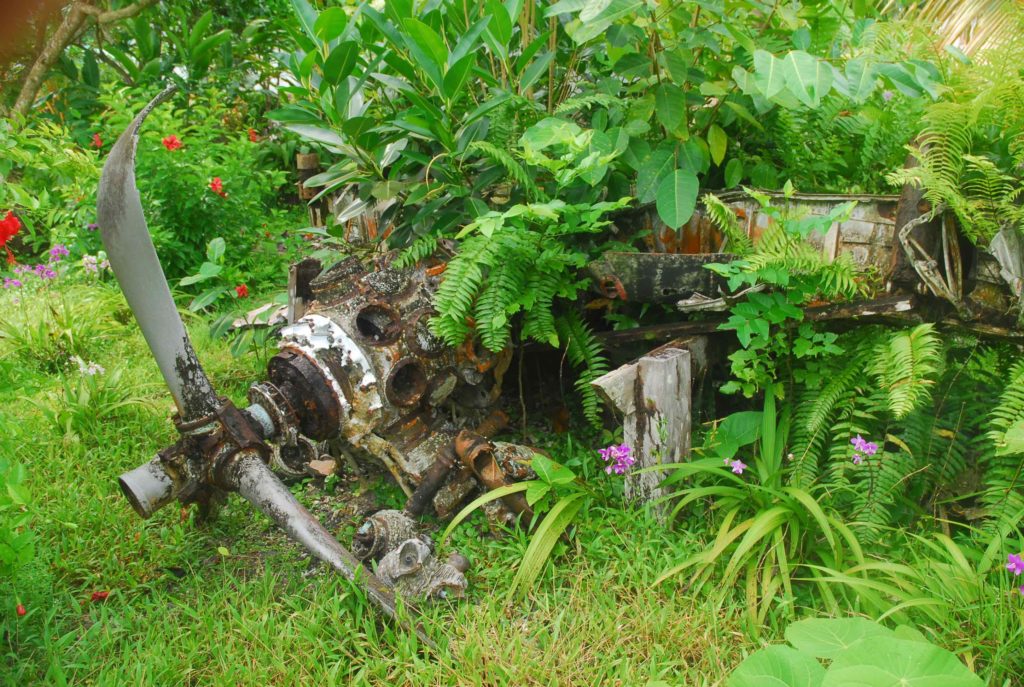
There is even a Japanese World War ll fighter plane (type unknown) at its last resting place in the back of the garden after it crashed in 1944 – the island was just bush at the time, but it’s a stark reminder that war was really a serious affair in the Solomons and it makes a striking ‘garden feature’ surrounded by lush ferns and colourful tropical flowers.
Ropiko was originally set up by the Piko family in 1994 as Ropiko Eco Lodge, then it was upgraded in 2000.
It sits on Gatokae Island, the gateway to the world famous Marovo Lagoon, which is the world’s largest island enclosed lagoon, protected by a double barrier reef system. Novelist James Michener once described Morovo as the eighth wonder of the world.
It contains hundreds of beautiful, small and mostly untouched islands, the majority of which are covered by coconut palms and rainforest and surrounded by coral.
You come here to dive, snorkel, see the underwater volcano, visit laid-back villages, picnic on deserted islands, take a lagoon tour, meet master carvers, kayak across the lagoon or take a walk through the rainforest or up amazing summits.
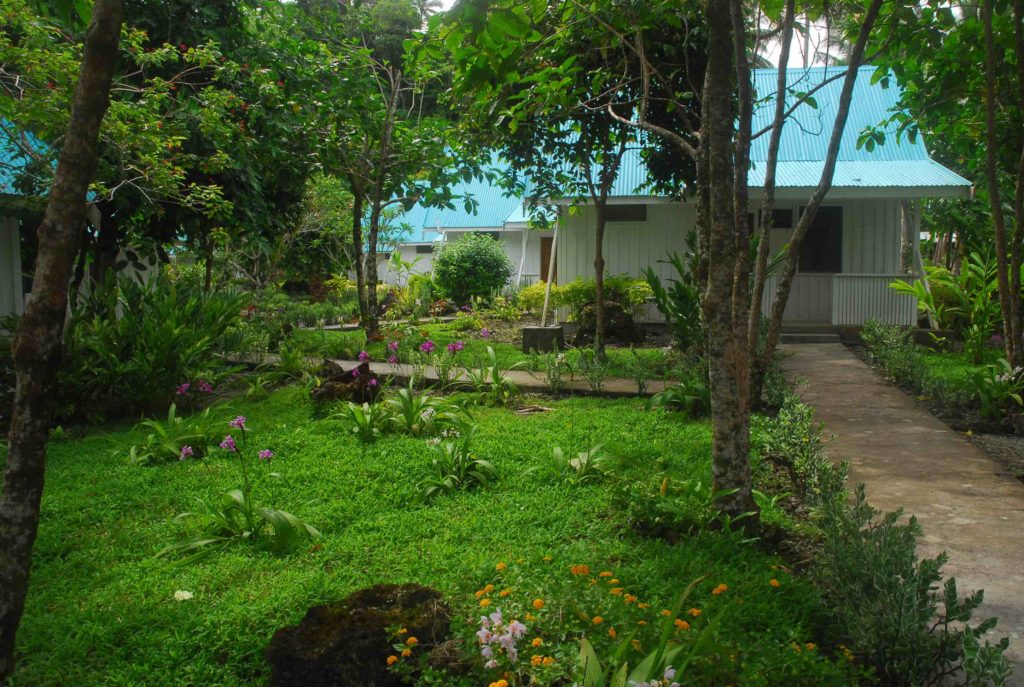
Ropiko’s accommodation is set right on the ocean’s doorstep, all rooms are well appointed, with private amenities, fans and new beds late in 2018, making for a perfect night’s sleep.
Manager Ron Piko explained that it has one dormitory, three family huts which are a rarity in resorts and five huts for couples. Each unit is named after a local fish or bird, with a carved and painted nameplate in local language and English to greet guests.
Meals are taken in the dining hall, which has a soaring thatched roof and beautifully carved posts and lintels depicting sea creatures and local custom stories or legends.
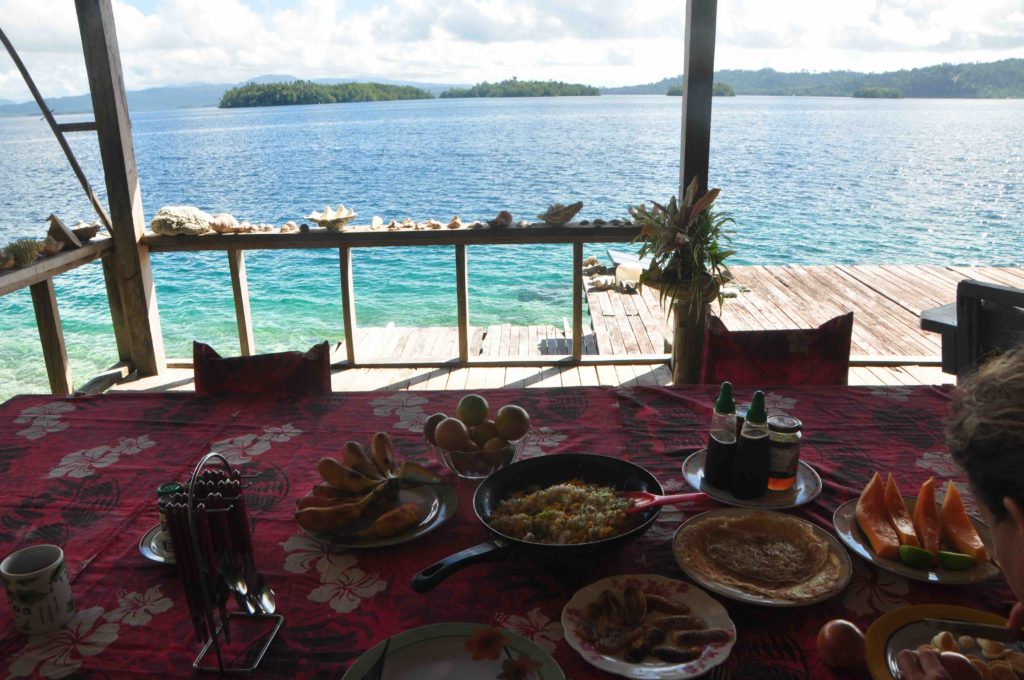
Using home grown organic vegetables, fruits and fresh fish, one of the true delights at Ropiko was the food.
The chefs, Jenevah (Ron’s sister) and another relative, Cherol, prepared wonderful, wholesome and substantial dishes, cooked in local styles but with a western flavour. All accommodation prices include breakfast, lunch and dinner. One memorable meal was trevally caught that morning by Ron and it just melted in the mouth.
Ron explained that environmental sustainability and community support are at the core of their business.
“We take pride in doing everything we can to support local ecosystems and give back to the villages surrounding the resort while allowing them to preserve local cultures,” he said.
Marovo Lagoon and the surrounding area are renowned for their diving spots.
Not only is there an abundance of fish, coral and marine life but also many WWII wrecks to explore, including four intact boats in Welkom Harbour. All the necessary diving equipment can be hired from local dive operators.
Just out from the resort, the reef at Mbulo Island is full of marine life; huge coral, schools of fish and even the occasional turtle. You can walk to other spots in the lagoon for more spectacular scenery.
Ropiko has a private sandy beach that is safe and exactly what’s needed to cool off. If you’re after something different take a short stroll to where an underwater river enters the sea and it is much colder.
Boating, canoeing and spear fishing are available and local guides can show you all the good spots and provide basic gear.
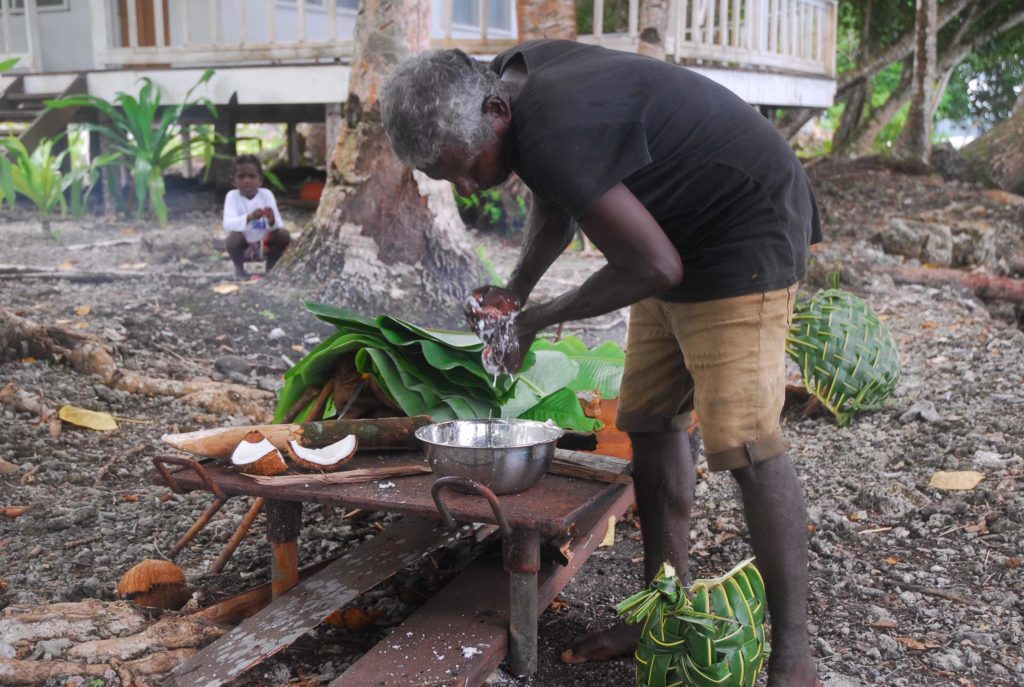
You can walk or take a boat to Kavolafota village to experience the traditional village life – find out about the local fruit, vegetables and medicines, learn to weave and grate coconut, even feed the friendly eels living in the local river.
For something more unusual, take a 30-minute stroll to a nearby cave system and see the many types of bats and shrimps that live there.
And to experience something completely different, you can take a two hour boat ride out to Kavachi underwater volcano and see it explode out of the water. It is quite weird and a little scary but something you’ll probably never do again anywhere.
Or you can just lie in the shade and relax and do absolutely nothing at all.
To visit Ropiko is to find another time and place and there are so few untouched places to compare it to in the Pacific.
Worth noting is that all 4000 islanders on Gatokae are Seventh Day Adventists, so there is no alcohol sold at Ropiko, but guests are welcome to bring their own alcohol supplies.
© 2024 Pacific Island Living Magazine all Rights Reserved
Website by Power Marketing